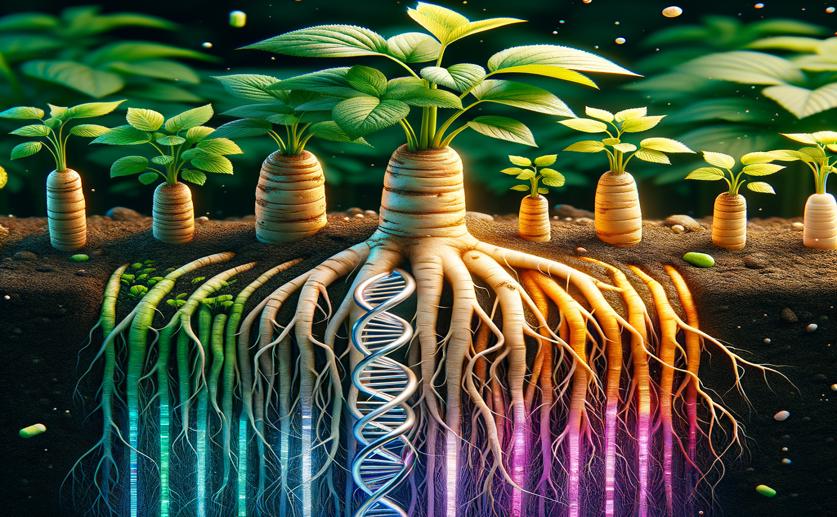
How Ginseng Roots Grow: A Look at Their Changing Chemistry and Genes
Greg Howard
6th March, 2024

Image Source: Natural Science News, 2024
Key Findings
- In China, a study found that Panax notoginseng taproots change chemically as they age
- Young taproots have more amino acids and lipids, while older ones increase in flavonoids and terpenoids
- Researchers linked these changes to specific genes, aiding future crop quality and cultivation
References
Main Study
1) Integrated metabolome and transcriptome analyses reveal the molecular mechanism underlying dynamic metabolic processes during taproot development of Panax notoginseng.
Published 5th March, 2024
https://doi.org/10.1186/s12870-024-04861-8
Related Studies
2) Plant Secondary Metabolites as Defenses, Regulators, and Primary Metabolites: The Blurred Functional Trichotomy.
3) Downregulation of barley ferulate 5-hydroxylase dramatically alters straw lignin structure without impact on mechanical properties.
4) Interactions Between Phenolic Acids and Microorganisms in Rhizospheric Soil From Continuous Cropping of Panax notoginseng.
5) Autotoxin Rg1 Induces Degradation of Root Cell Walls and Aggravates Root Rot by Modifying the Rhizospheric Microbiome.



 8th February, 2024 | Jim Crocker
8th February, 2024 | Jim Crocker